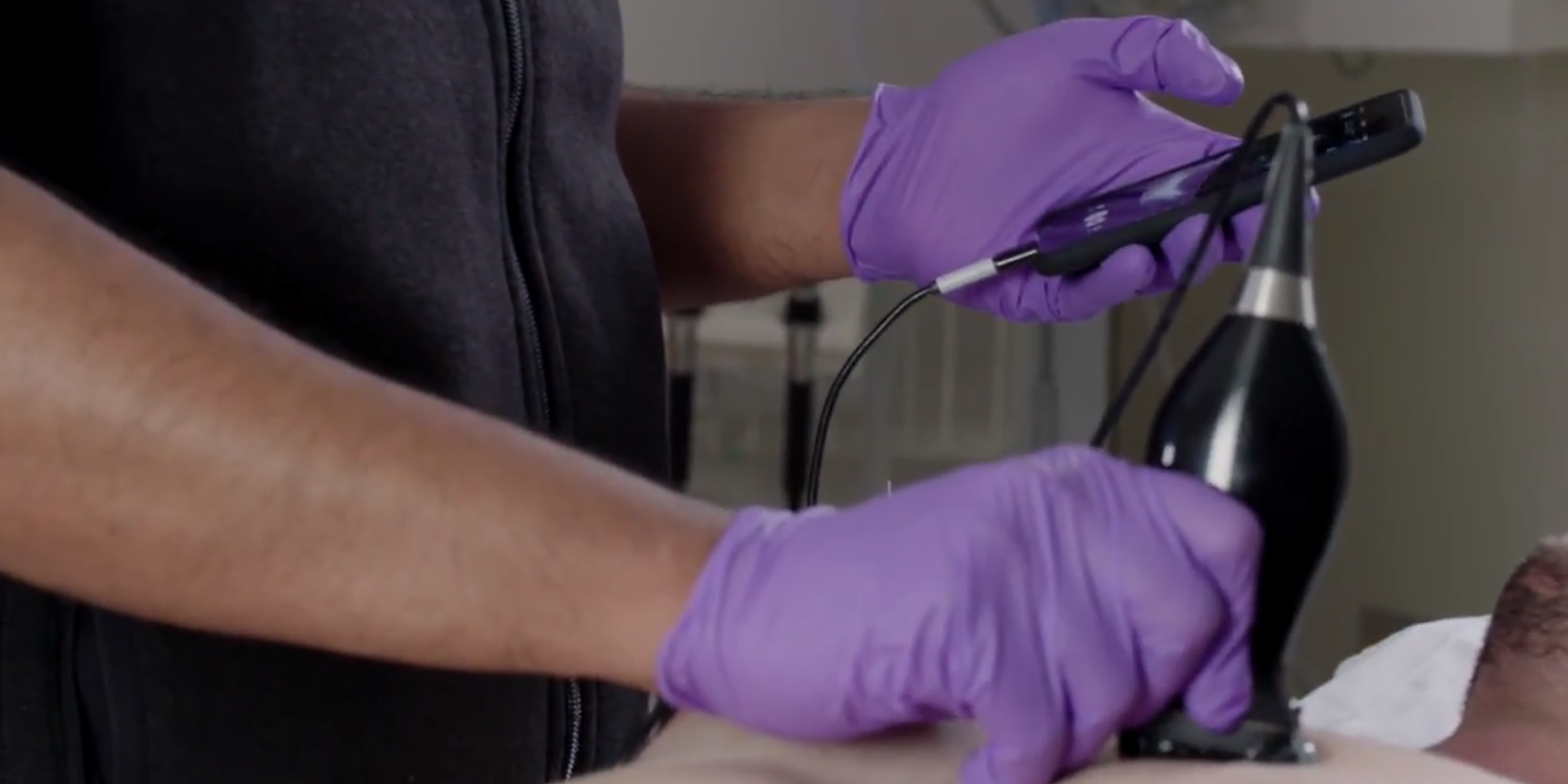Early detection of diseases can greatly increase a patient’s chance for successful treatment, but many are reluctant to visit a doctor because they’re either too busy or afraid of high costs. Those concerns could soon be resolved by a device we carry around every day—our smartphone.
Earlier this year, vascular surgeon John Martin was feeling an uncomfortable thickness in his throat. He grabbed his iPhone and a pocket-sized ultrasound device and moved the electric-razor shaped object up and down his neck as if he were shaving. A black-and-white image instantly appeared on his smartphone, displaying a three-centimeter mass that didn’t belong. Martin had squamous-cell cancer. He has since undergone surgery and radiation treatment.
The device he used is called the Butterfly iQ, a portable ultrasound machine designed for use in ambulances or at home. Instead of producing sound waves using vibrating crystals, the Butterfly sees using 9,000 tiny capacitive ultrasound transducers that are layered onto a semiconductor chip.
“To look at this as just an ultrasound device is like looking at an iPhone and saying it’s just a phone,” Martin told MIT Technology Review. “If you have a window into the body where anyone can afford it, everyone can use it, and everyone can interpret it, it becomes a heck of a lot more than an ultrasound device.”
There are other alternatives on the market, but they’re not as inexpensive as the FDA-certified Butterfly iQ. The portable ultrasound will ship exclusively in early 2018 for $2,000. Its creator, Butterfly Network, says it eventually wants to bring the iQ to consumers. For now, it can only be purchased by a licensed healthcare practitioner or facility in the U.S. that’s permitted to perform ultrasounds.


